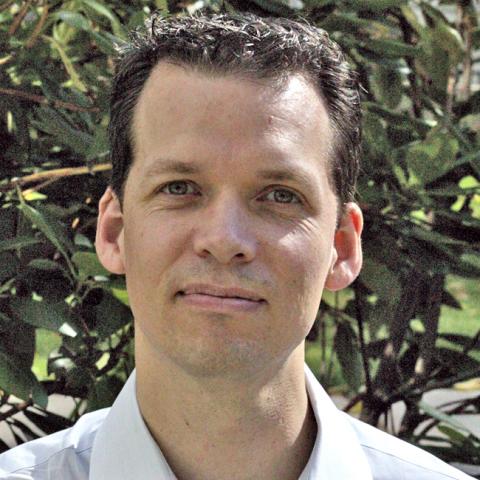Meet Our Researchers

Daniel MacArthur
Daniel MacArthur is a geneticist who pulls useful information out of genetic “big data.” He is also an assistant professor at Harvard Medical School.
As a BroadIgnite awardee, Daniel is using his funds to launch an initiative to provide definitive diagnoses for 20 patients suffering from rare muscle diseases using a method developed at the Broad. By sequencing the patients’ expressed genes, he’s working to identify the exact genetic cause of these severe diseases.
Rare diseases exert a massive combined burden of suffering, accounting for around 10 percent of child hospital admissions and one-fifth of all child deaths. For many affected families the underlying genetic cause is unknown. As a result, patients suffering from rare diseases often experience frequent hospital visits and tests, sometimes spanning decades. They live in uncertainty, lacking information on how the disease might progress and how to determine if future children will be healthy.
Our research group focuses on devising ways to use genomic data to improve rare disease diagnosis and treatment. Sequencing a person’s whole genome—the entire DNA—has become increasingly routine for pinpointing genetic changes that result in disease, and has provided 30 to 40 percent of those with rare neuromuscular disorders with genetic diagnoses. But many patients remain undiagnosed even after this test. Therefore, we wanted to see if we could complement DNA sequencing with additional information about gene expression to identify the causes of patients’ disorders.
When genes are expressed, they use the DNA template as a blueprint for producing functional molecules called RNA. The BroadIgnite award allowed us to directly measure RNA levels via sequencing. Just looking at the DNA doesn’t always tell us how gene expression will be affected by mutations. But by combining our analysis of changes in the DNA with that of the RNA from a gene, we can determine if a genetic mutation changes how strongly the gene is expressed or the structure of the RNA it produces. A mutation that significantly changes gene expression levels or RNA structure could throw cellular functions off balance and cause disease.
We assembled a cohort of 45 patients, 10 of whom had already been diagnosed using DNA sequencing. The remaining 35 patients had not yet received a diagnosis, despite comprehensive clinical and genetic testing. First, we verified that RNA sequencing could identify the known genetic variations in the previously diagnosed patients. We leveraged this knowledge to develop computational methods to efficiently identify these confirmed variations, and then tested these tools in our undiagnosed patients.
Our new methods led to successful diagnoses for 11 patients, or 30 percent of our undiagnosed cohort—a remarkable increase. Some of these patients had their DNA sequenced as long as five years ago but had not yet received a diagnosis.
Of special note, RNA sequencing identified a shared and previously unknown genetic change in two patients with a progressive childhood-onset muscle weakness. Finding such a shared mutation is statistically very unlikely in a small cohort of 35 patients with rare disease. Because of this unexpected overlap, we hypothesized that this genetic change might also be found in other undiagnosed patients with similar symptoms. As a result, our clinical collaborators began testing for this variant in their undiagnosed patient cohort, and quickly identified eight additional patients with the variant—suggesting that this variant accounts for a large fraction of undiagnosed families with this disease.
This pilot project was the first of its kind to systematically demonstrate the usefulness of RNA sequencing in rare disease diagnosis. BroadIgnite funds were critical to assembling the cohort, testing our method, and returning useful information to patients about their disease. This project also provided critical preliminary data that we used in new funding applications, resulting in a four-year grant award from NIH to dramatically expand our rare disease diagnosis activities for hundreds of patients.